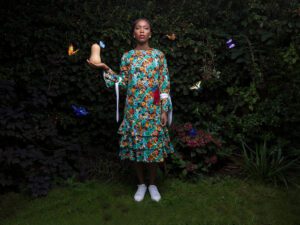What defines a ‘Bauhaus photograph’? In The Spirit of the Bauhaus (Thames & Hudson, 2018), curator Louise Curtis writes that, in the early-to-mid-1920s, cameras were used “to uncover previously unimagined scales and forms of reality.” One of the most famous pioneers of this approach was László Moholy-Nagy (1895-1946), interested in abstraction, space and the possibilities of the lens. “He insisted above all upon its capacity to extend human vision beyond standard habits of perception,” says Curtis.


These same ideas underpin the work of Rotterdam-based Sebastiaan Knot (b. 1970), whose illusory geometries are created without any digital manipulation. Crisply folded sheets of card pop out from orange, purple and pink walls – casting sharp lines of light and shadow. Elsewhere, a red rectangle stands tall against a deep blue backdrop. The results are deeply satisfying, drawing the eye into abstract worlds.


All the colour you see here is light; every object in Knot’s compositions is, in fact, white and grey. The artist explains the process: “A composition of simple shapes is placed in the studio, surrounded by studio lamps with different colour filters. When shooting, the composition is illuminated simultaneously. This creates a unique shot with scattered light, shadows and mixed colours. The use of a lens adds optical illusion and causes us to question what we see.” The results are bright and energising.


The Light and Space movement transformed colour and perception into an art form during the 1960s. Knot is also influenced by James Turrell (b. 1943), one of the group’s most famous proponents. Turrell continues to draw audiences into mesmerising monotone installation spaces called Ganzfelds: a German word to describe the phenomenon of the total loss of depth perception. Knot’s pieces work in a similar way, translating a sense of disorientation from three to two dimensions – and lifting us out of the everyday.
All images courtesy Sebastiaan Knot.





